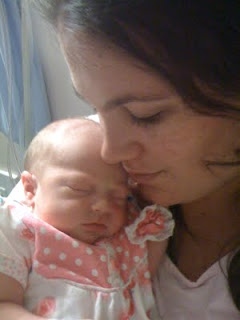I am quite often asked about which programs I use for language and math so I thought I'd write a blog about them.
It has been 15 years since I began studying teaching at uni and 11 years since I became a fully qualified teacher. In that time I have seen so many changes to the way we teach, the programs we use, the outcomes we teach to. The teaching philosophy changes so quickly that I could not keep up with what the latest teaching craze was. On one hand it is quite good that so many people are passionate about finding the best way to teach and perfecting their programs or ideas. On the other hand, for all the flash programs out there that you can buy, all the fancy ways to teach using thinking hats or multiple intelligences or blooms taxonomy, blah, blah, blah..... I have not noticed any improvement in the abilities of the children that we are teaching. Quite honestly I think standards are slipping and have been slipping for a very long time.
That is why my favourite, and the most effective way I have found, to teach is the 'sit down, shut up and listen!!!' method (yes I can almost hear the gasps from most homeschooling mums!!!). I am not a fan of play based learning and blame it for all the pampered, over indulged teenagers we are seeing who cannot cope with any kind of structured or hard work.
So I have picked a reading program, and a maths text book and for approx 3 hours a day Kylah sits down, shuts up and listens. I really love real world learning and spend a lot of time teaching her in a non formal setting throughout the rest of our day's, weekends, holidays. Whether it be cooking, bush walking or through discussion. The children's' nightly bedtime story is from a childrens version of a book called 'A Short History of Nearly Everything' by Bill Bryson. It is predominately about science and reading it each night leads us into many discussions about science, history and the world.
The readers I use are PM+ readers by Nelson publishers. For each reading level there are ten books to read, which introduce new words very slowly so that the children can really focus on the meaning of the text and not get frustrated trying to read too many new words. I really want to encourage my children to read for pleasure and they seem to enjoy reading the PM's. The teachers guide has photocopiable activity sheets that help to increase their language skills. There is one activity sheet per book and a list of extra activities you can do if you so choose. There is also one running record (like a reading test) per level so you can check to make sure that your child is competent in that level before moving on to the next.
The PM readers are quite expensive. I think about $7.60 per book and then the teachers guide is $65, which covers 3 levels of readers. But I see them as an investment. I am not going to buy any other program. No matter how fancy or good it seems. Our parents and grandparents learned to read without all these fancy programs so my children, and hopefully my grandchildren, will be able to learn to read with these basic readers.
Having said that I do also use Fitzroy Readers. The Fitzroy Readers are a lot longer than the PM's but only have approx 1 - 2 books per reading level. There are about 7 word skill activity sheets that accompany each reader though and I find them to be quite good. So we use the Fitzroy readers in conjunction with the PM's just so we have a bit of variety.
For Maths I use the Signpost Maths Text book. It is quite cheap and you can pick it up from most news agents or book stores. I use it because my maths lecturer at uni loved it and showed us many supplementary activities we could do to support each new concept introduced in the text book. These are all explained comprehensively in the teachers guide. I don't have the teachers guide as for the majority of my years teaching I used Signpost and know all the activities. Signpost is an advocate of the 'number sense' method of teaching mathematics which I really love. In fact I was really crap at maths during my primary/high school years and it wasn't until I went to uni and was re-taught all the concepts using a number sense approach that the penny dropped and I finally understood and loved maths!!! I was so amazed by how much I liked it once I was taught properly that I majored in mathematics at uni.
On top of using the Signpost Text Book and doing the supplementary activities that go along with it, we do a lot of real life maths (shopping, cooking, building etc). We also do a lot of drills and practice of number facts and times tables. I have a lot of maths resources. I find it an absolute MUST to have on hand MAB blocks, counters, 3D shapes, fake money, cuiseniere rods, fraction kits... the list goes on!!!! I am currently on Ben's case about either making or buying me a 100's board.
I do not think these programs are superior to any other programs out there. They are just ones that suit me, my teaching style and my family. If you would like to ask any other questions about these programs please feel free to ask me.
I will endeavour in the coming weeks to add some more information and also add some pics of readers and resources that I use (my camera is out of batteries at the moment).

















































